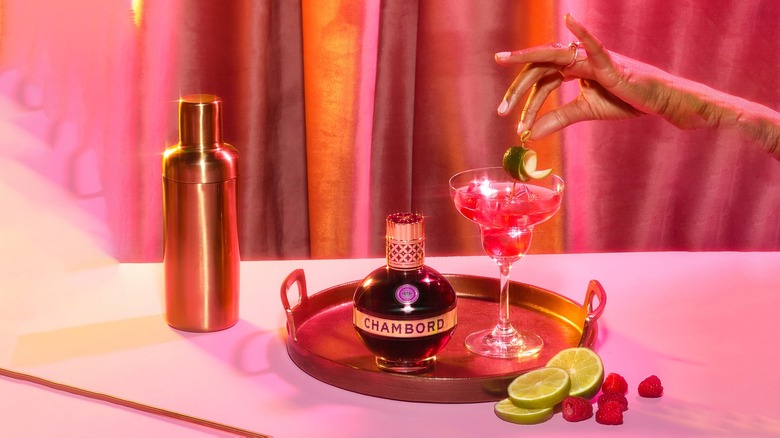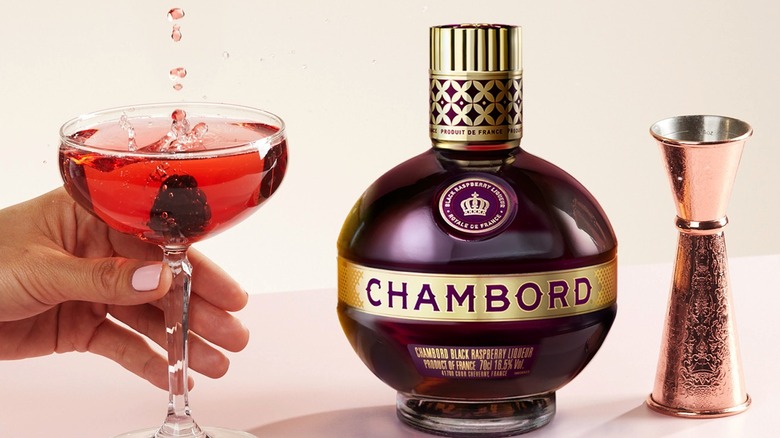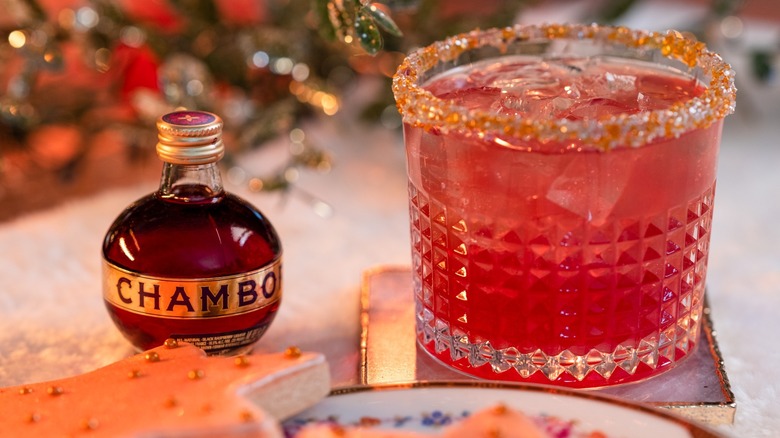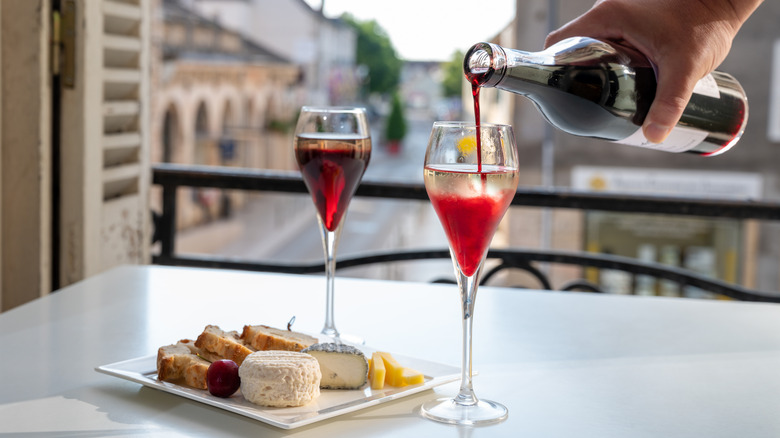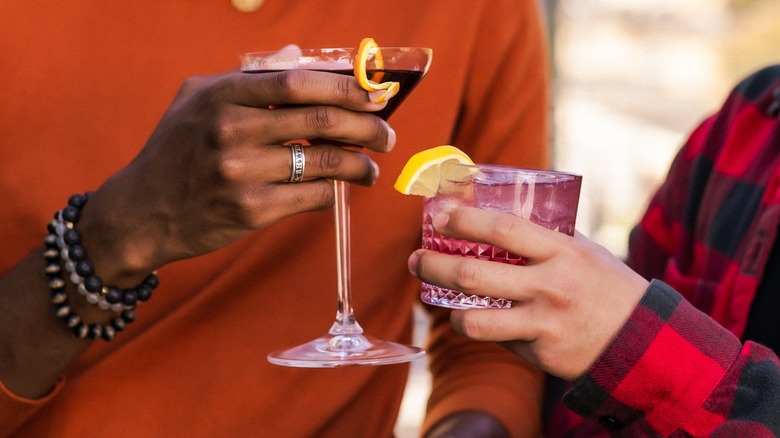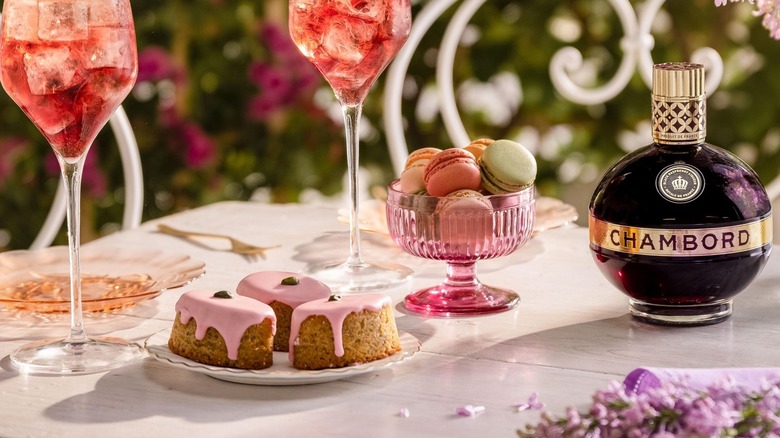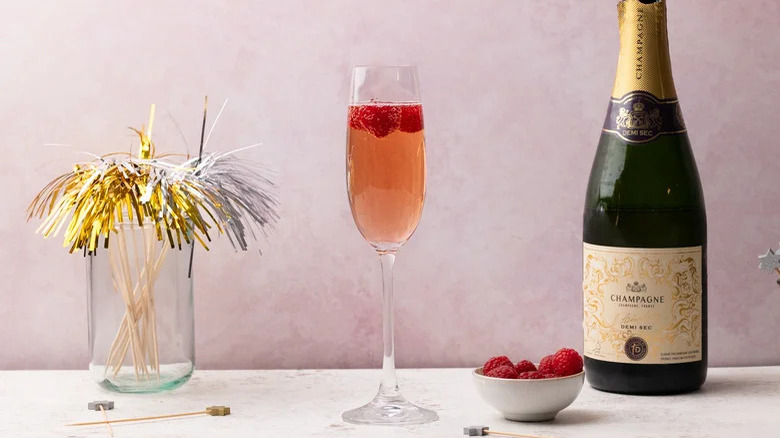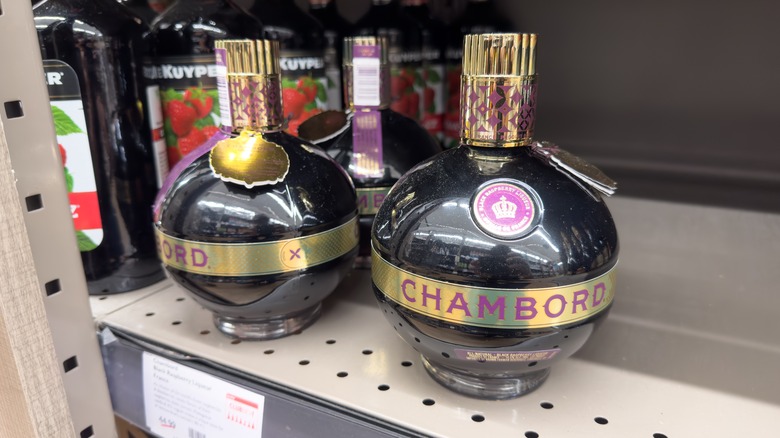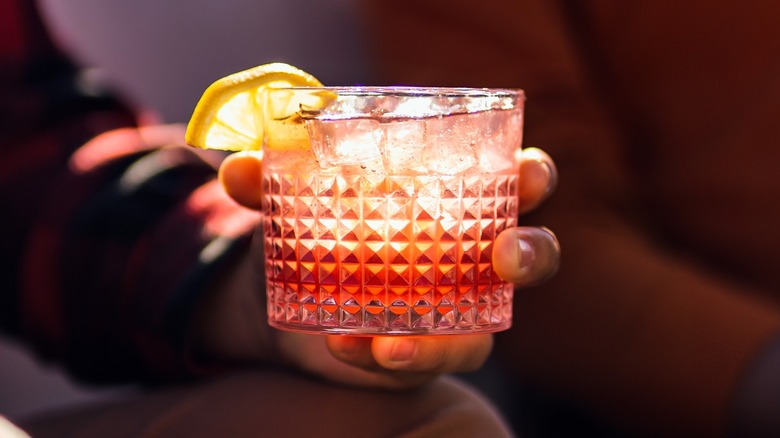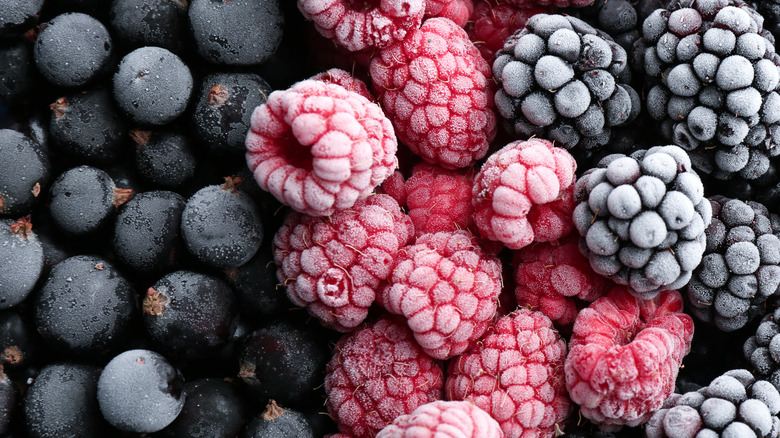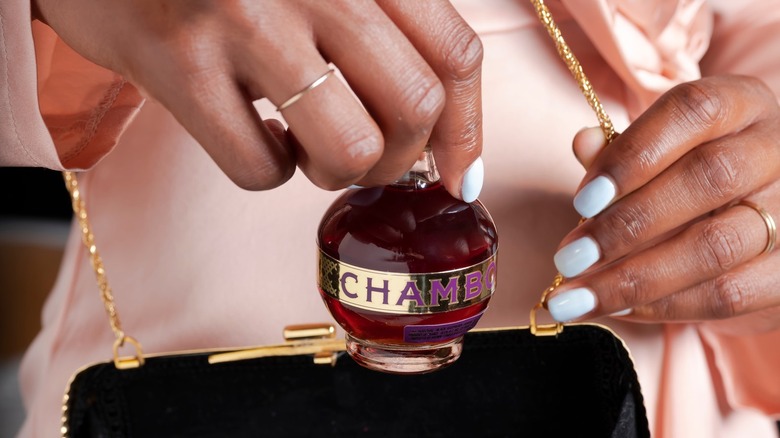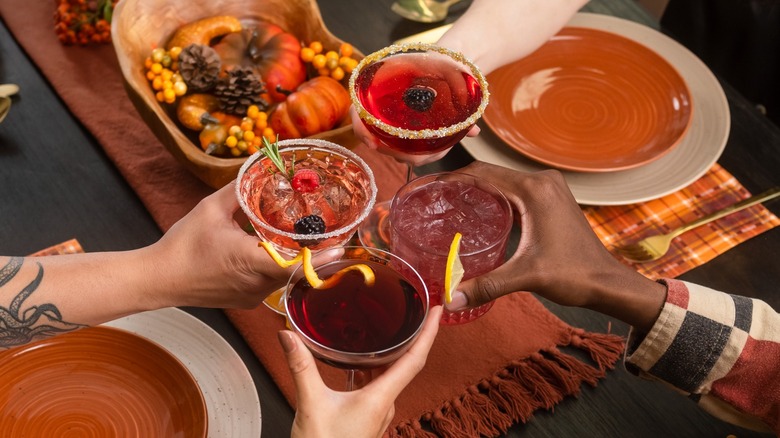What Is Chambord And How Do You Drink It?
When exploring the diverse and colorful world of liqueurs, the design of a bottle often plays a subtle yet significant role in the overall appeal of the product. This is particularly true for Chambord, whose unique bottle design is as much a part of its identity as its contents. While a visually appealing container can be a delightful addition to any bar, Chambord's design goes beyond mere aesthetics, reflecting the very essence of what lies within.
The globe-shaped bottle of Chambord, available in various sizes, is not just visually striking but also evocative of the rich, luxurious elixir it contains. The deep, ruby hue of the liqueur, visible through the glass, suggests both depth and complexity. This design choice does more than just catch the eye; it's a testament to the careful crafting and rich heritage behind the liqueur.
Originating from the Loire Valley in France — known for its chateaux and historical significance — Chambord carries with it a sense of tradition and artisanal craftsmanship. The bottle is an introduction to Chambord that invites you to discover its versatility, blending both historical richness and delicious appeal in each serving.
What is Chambord?
A familiar sight in liquor stores or on the shelves of well-stocked bars, Chambord is a sophisticated blend of brandy infused with a variety of berries. Additional flavors create a complex and appealing taste profile. Though it officially became known as a liqueur in the United States in 1982, the tradition of infusing brandy with fresh berries dates back much earlier. It's believed that Louis XIV savored a similar concoction during his many visits to the Loire region and, specifically, Château de Châmbord after he had it restored. He and members of his court would return for extended stays each year.
Chambord is also noted for its deep burgundy hue, and it's produced at La Sistiere Chateau in the picturesque Loire Valley. As you may have already deduced, the liqueur's name is derived not from its place of production but from the iconic Château de Châmbord where Louis XIV enjoyed it.
How is Chambord made?
The creation of Chambord at La Sistiere Chateau is an intricate process, beginning with a substantial infusion stage. This initial step involves blending several tons of frozen blackberries, black currants, and raspberries with sugar and neutral alcohol. The choice of frozen fruit, rather than fresh, is deliberate, ensuring the richest possible flavor profile. Every 12 hours, the container filled with this frozen fruit and alcohol mixture is gently rotated, but aside from this, it is left undisturbed for a month.
After this period, the infused liquid is carefully extracted, and the leftover fruit pulp undergoes another infusion with diluted neutral alcohol to further pull flavors. Following this step, the second batch of juice is drained, and the remaining berry bits are thoroughly blended and pressed to produce a third part and the final juice.
This careful process ends in a blending of the three parts. To this mixture, additional ingredients are added to enhance the complexity of the flavor. These include French cognac, Madagascar vanilla, citrus, and herbs, as well as honey. Before bottling, it also goes through a filtering and concentration process with sugar, more alcohol, and water.
Chambord vs. creme de cassis
If you enjoy fruity, elegant drinks, Chambord and crème de cassis are two liqueurs you may have come across in your cocktail-sipping adventures. Though different, they also have some similarities, as both are berry-infused spirits. However, they differ in the specific berries and additional ingredients used. Chambord is crafted with a blend of blackberries, black currants, and raspberries, offering a complex flavor profile. In contrast, crème de cassis is made exclusively with black currants, known as cassis in French, resulting in a more straightforward taste.
The infusion process for both liqueurs involves sugar and alcohol, but Chambord stands out with its additional layers of flavor. This complexity makes Chambord distinct, while crème de cassis maintains a simpler, more direct berry essence. Despite these differences, the two liqueurs can be used in similar ways. In fact, you can combine crème de cassis and sparkling wine in much the same way you'd use Chambord and champagne. Ina Garten especially enjoys pairing crème de cassis with champagne for a beautiful, jewel-toned cocktail.
What does Chambord taste like?
Aside from its striking color, the first thing you'll notice about Chambord is its fruity and sweet taste. The liqueur possesses a silky texture, with subtle hints of vanilla, citrus, and even honey. These nuances aren't always immediately distinguishable but meld harmoniously into the liqueur's overall taste.
Chambord can be a delightful complement to sparkling wine. If you encounter a sparkling wine that's a bit too dry for your taste, adding Chambord enlivens and enriches it. This versatility makes Chambord an ingredient that can transform, personalize, and enhance your overall drinking experience.
In our experience, Chambord shines brightest when it's part of a cocktail that skillfully balances sweet and dry elements. It's not the best for enjoying on the rocks. In such mixtures, Chambord doesn't act solely as the sweetening agent. It also harmonizes the contrasting flavors. This balanced approach allows Chambord to enhance the drink's overall profile, adding complexity and a rounded, more sophisticated palate.
How to cook with Chambord
With its delightful taste and vibrant appearance, Chambord serves as an exceptional ingredient in baking recipes. Its inclusion in cakes — particularly chocolate ones — adds a unique depth of flavor. Consider using Chambord as a substitute for various extracts your recipe might call for. However, it's important to remember that when adding liqueur to baking, moderation is key. A small amount can impart significant flavor.
It's also worth noting that despite the cooking process, some alcohol content may remain in the baked goods. Therefore, it's advisable to reserve Chambord-infused desserts for the adult table rather than for younger diners. For frostings where the liqueur isn't cooked off, Chambord is an ideal alternative to traditional extracts. You can use the same measurement as the extract to maintain the desired consistency in your frosting.
Chambord is particularly well-suited for enhancing the jelly used between cake layers. Its rich, fruity profile can elevate the overall flavor of the cake, offering an exquisite taste experience. This versatility in both taste and application makes Chambord a valuable addition to your pantry, especially if you enjoy creating desserts with a touch of sophistication and indulgence.
Drinks to prepare with Chambord
In addition to its uses in baking, Chambord also excels in cocktails, adding rich color, sugary sweetness, and fruity notes. One of our favorites is the Classic French Martini. This cocktail is a blend of two ounces of vodka, one and a half ounce of pineapple juice, a half ounce of Chambord, and an optional raspberry for garnish. Start by filling your cocktail shaker with ice. We prefer using large ice cubes, as they chill the drink without diluting it excessively. Add all the ingredients except for the raspberry and shake well. If using a metal shaker, continue shaking until the exterior becomes noticeably cold, usually around 15 seconds. We also suggest chilling the martini glass in the freezer briefly for an extra cool touch. Finally, garnish with a raspberry on the rim of the glass and enjoy.
For celebrations featuring champagne toasts, try making a Kir Imperial, which is sweeter than your typical champagne offerings. This drink is a twist on the classic Kir Royale, which usually combines champagne or sparkling wine with crème de cassis. To prepare a Kir Imperial, pour one and a half ounces of Chambord into a champagne flute, then top it with at least five ounces of icy cold champagne. Add a few raspberries on top for an elegant finishing touch. To ensure the drink remains cooler for longer, consider using frozen raspberries, as they provide garnish and help keep your bubbly chilly.
Where to buy Chambord
Chambord is readily available in most liquor stores and even at major retailers like Target and Publix in some states. It's typically found in the liqueur section. However, for those who prefer online shopping, Chambord can also be purchased directly through the Chambord website. This option, though, is currently limited to fans residing in the United States or the United Kingdom.
Upon visiting the site, you'll be prompted to select the state to which your order will be shipped. This step will reveal whether or not online purchase options are available there. Clicking through each state, we noticed that there are quite a few that don't offer online retail. However, for the ones that do in the United States, if Chambord is available for online purchase, it will generally be through one of two sellers: Drizly or Reserve Bar. The availability of these sellers varies by state. Some have both options, while others might offer only one. This online purchasing method provides a convenient way to acquire Chambord without leaving your home, especially if you're struggling to find it in your go-to stores or if you're looking for a more streamlined shopping experience.
Nutritional information about Chambord
In terms of nutritional content, a serving of Chambord is measured at one and a half ounces, which is the same serving size recommended for both the classic French Martini and the Kir Imperial cocktail. Chambord has an alcohol by volume (ABV) of 16.5%. Each serving contains 94 calories, along with 14 grams of both sugar and carbohydrates.
Of course, the nutritional information for Chambord should be viewed in conjunction with the other ingredients in your cocktail to understand the full nutritional profile. For instance, when preparing a Kir Imperial cocktail according to our recommended proportions, the resulting drink contains approximately 250 calories, with 18.1 grams of carbohydrates and 15.3 grams of sugars. This is due to the combination of Chambord, champagne, and raspberries in the cocktail, each contributing to the overall nutritional content. When evaluating the nutritional impact of your cocktails, it's essential to account for all the components to get an accurate picture of what you're consuming.
Ingredients in Chambord
Chambord's allure to berry lovers and those who adore a beautifully pink cocktail lies in its sophisticated blend of natural ingredients, with each one chosen for its unique additions to the liqueur's resulting taste and mixability. The primary ingredients — blackberries, black currants, and raspberries — are key to Chambord's signature taste and vibrant color. The infusion of fine French cognac creates a base that's both rich and smooth.
Complementing this berry-cognac fusion are the delicate additions of Madagascar vanilla and Moroccan citrus peel. The vanilla adds a subtle, creamy richness, enhancing the depth of the liqueur without overpowering the berry flavors. The citrus peel introduces a light, refreshing zest, offering a counterpoint to the sweetness and bringing something forward that berries simply don't have. The final touch is a blend of herbs and just a touch of honey, which rounds out the profile, creating a harmonious balance between sweetness, fruitiness, tartness, and herbal notes. Together, there's a lot more going on with these ingredients than meets the eye.
Varieties of Chambord
Chambord is available in several different sizes, catering to various needs and occasions. These include 750 milliliter, 375 milliliter, 200 milliliter, and even 50 milliliter options. Your choice depends largely on the size of your gathering and how frequently you intend to use Chambord. The 50-milliliter bottles are particularly convenient for carrying in a purse when heading to a gathering where you'd like to add a personal touch, or even as a thoughtful gift. These smaller sizes are ideal for individual servings or for those wanting to sample the liqueur without committing to a larger bottle.
For larger gatherings or for avid Chambord enthusiasts looking to replenish their home bar, the 750-milliliter bottles are more suitable. These larger containers ensure there's plenty to go around, making them perfect for parties or as a staple in a well-stocked home bar.
While more elusive, there is also a Chambord-flavored vodka available, offering a unique twist on the classic liqueur. This variant is a light pink color and is quite pretty. It combines the familiar rich berry flavor of Chambord with the smoothness of vodka, creating a blend that's like a reinterpretation of the original Chambord spirit. This flavored vodka can be a delightful alternative for those looking to explore new dimensions of Chambord's signature taste, if you can find it.
How to store Chambord
If you've had a bottle of Chambord tucked away in your pantry and haven't opened it yet, rest assured, it's likely still in good condition. Unopened bottles of Chambord can retain their quality for an extended period. However, the story changes once the bottle is opened. To enjoy its optimal flavor, it's best to consume Chambord within six to 12 months of opening. Beyond this timeframe, you might start to notice a decline in its quality.
Storage plays a crucial role in ensuring your Chambord remains as delicious as possible during this period. Keep the bottle in a liquor cabinet or pantry where it's cool and away from direct light. These conditions help in preserving its flavor and color.
If you're uncertain about the condition of your Chambord, a quick visual inspection can be telling. Take a look at the liquid; if you observe a brownish or orange tint, this indicates that the liqueur has oxidized due to prolonged exposure to air after opening. In such a case, the quality and taste of the Chambord may have been compromised, and we would recommend replacing the bottle rather than using it in your drinks or recipes. Keeping an eye on these signs will help ensure that each time you reach for your Chambord, it's in the best possible state for your enjoyment.
